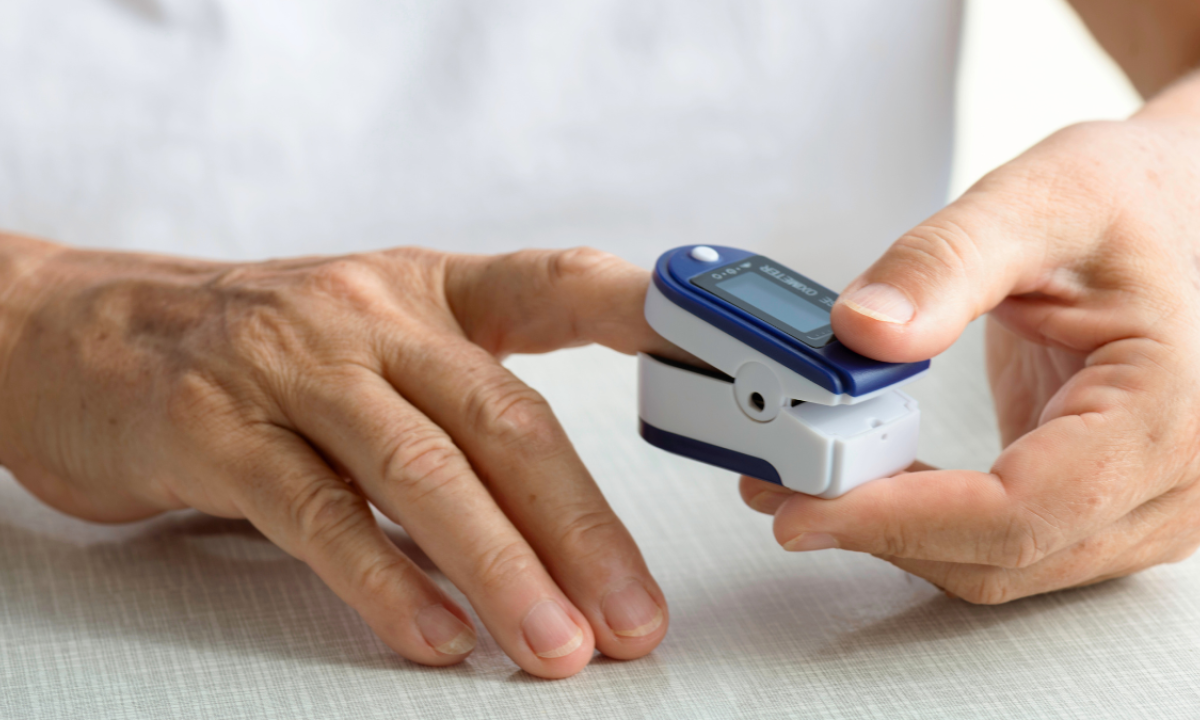Calls for Ukraine
Calls for Europe
Calls for USA

The difference, or bias, between pulse oximeter estimates of blood oxygen saturation levels compared with the gold standard method of measuring arterial blood oxygen saturation is significantly different in patients with dark and pigmented skin compared with patients with light skin, according to a study presented at the American College of Cardiology Annual Scientific Session (ACC.25) March 29 in Chicago.
The new findings come from the largest prospective study to evaluate the relationship between skin pigmentation and pulse oximeter error in critically ill patients. The topic came to public attention during the COVID-19 pandemic, when some studies suggested that pulse oximeters could provide false information about a patient’s health status by overestimating blood oxygen saturation in certain racial groups.
In contrast to some previous studies, the results of the current study show that pulse oximeter data, on average, underestimated blood oxygen levels. However, the results also showed that pulse oximeters overestimated blood oxygen saturation, showing a positive bias in 20 percent of observations, with the proportion of observations with a positive bias differing between groups based on skin pigmentation levels.
“Although pulse oximeter error was negative on average for all people, it was less negative in people with darker pigmentation than in people with lighter skin pigmentation, meaning that pulse oximeters don’t work the same way in people with different skin pigmentation,” said Carolyn Hendrickson, a medical doctor, associate professor of medicine at the University of California, San Francisco, and first author of the study. – “We also found that the proportion of positive deviation from the truth, that is, upward bias when a person may have dangerously low oxygen saturation that is not detected by a noninvasive monitor, was higher in patients with dark skin pigment compared to patients with medium and light skin pigment.
Blood oxygen saturation is an important tool that physicians use to triage patients and make treatment decisions. According to Hendrickson, hospitalization, administration of supplemental oxygen and the use of advanced COVID-19 treatments depend on how saturated a patient’s blood is with oxygen.
With pulse oximeters, clips or disposable adhesive probes are placed on the fingertip or earlobe, where they shine light of a specific wavelength through tissue and measure how much light is absorbed or reflected. In the study, scientists compared pulse oximeter readings with functional oxygen saturation readings from blood gas analysis, a standard blood oxygen saturation test.
The study included 631 patients ages 62 and older treated in the intensive care unit at Zuckerberg General Hospital in San Francisco between 2022 and 2024. About a quarter of the participants were identified in medical records as Caucasian, a quarter as Hispanic, a fifth as black and a fifth as Asian.
The researchers measured each participant’s skin pigmentation using the subjective Monk Skin Tone Scale and objective measurements of melanin content using a spectrophotometer, a non-invasive device that measures the reflection and absorption of light. Based on the objective measurements, 53% of patients were classified as having medium pigmentation, 33% as having light pigmentation and 14% as having dark pigmentation.
Pulse oximeter and blood gas analysis readings were taken simultaneously, and most study participants had at least two such readings, totaling 1,760 paired measurements among the 631 study participants.
In their analysis, the researchers considered more than 30 factors that could potentially affect blood oxygen saturation readings, including demographic factors, comorbidities, medication intake and physical characteristics. After adjusting for these factors, the results showed the same general trends: patients in general tended to underestimate pulse oximeter values, but people with darker pigmentation had less negative bias and a greater likelihood of overestimation compared to those with lighter pigmentation.
Based on the findings, the researchers emphasized the importance of recognizing the uncertainty of pulse oximeter readings and suggested that future devices could be equipped with alarms or light indicators to indicate that readings are less reliable.
This study shows that in critically ill patients, pulse oximeter readings are much more uncertain than in healthy volunteers who participate in validation studies. More discussion is needed between manufacturers, regulators, and physicians to address those times when an oximeter shows less reliable readings.
Please rate the work of MedTour
